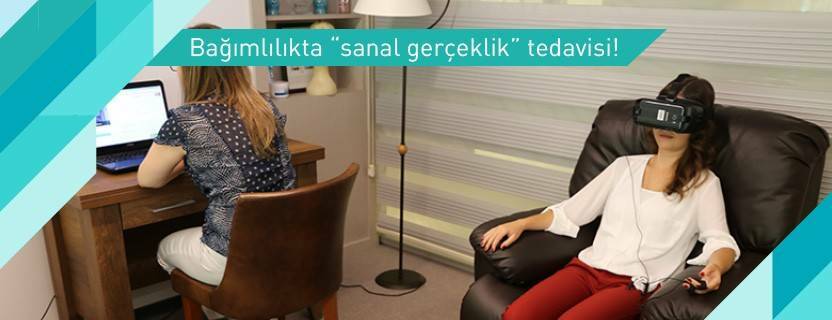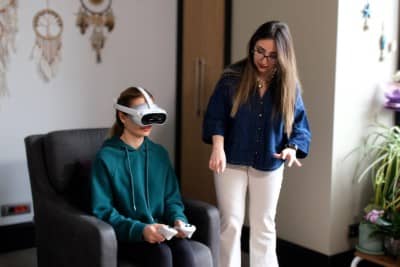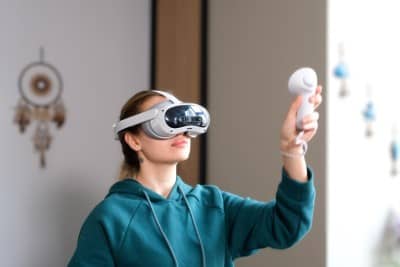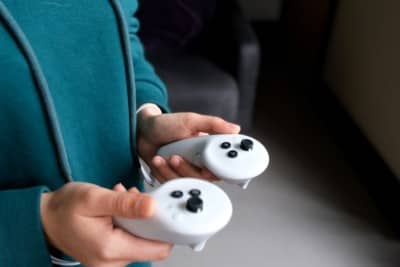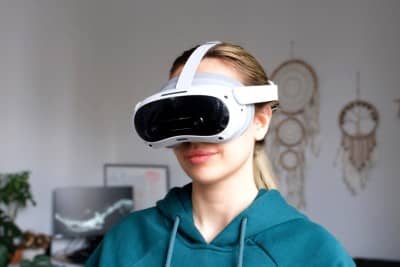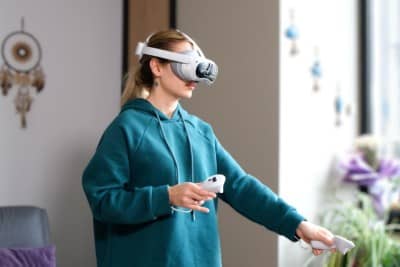- E-Magazine
"Virtual reality" used in addiction treatment aims to teach patients how to cope with cravings while minimizing the risk of relapse.
In the treatment method, which can improve the patient's ability to say "no", the patient sees together with his doctor how to reduce that desire when he experiences cravings and what changes occur in his body.
Psychiatry Specialist Assist. Assoc. Prof. Dr. Alptekin Çetin from Üsküdar University NPISTANBUL Hospital stated that virtual reality treatment, which is used in many psychiatric diseases, has started to be used in addiction and that the ability to say "no" is improved with virtual reality.
Noting that a digital environment is created by appealing to many different senses such as visual, sensory, touch and smell by using different computer techniques in virtual reality, Assist. Assoc. Prof. Dr. Alptekin Çetin said, "In patients followed up with the diagnosis of alcohol and substance addiction, virtual reality-based treatment methods are also used in order to evaluate 'craving' known as the desire to use alcohol and substances, to recognize the changes in the body when the person experiences alcohol and substance cravings and to recognize them and to combat cravings. The person wearing virtual reality goggles experiences what kind of problems he/she has in a bar or a party created in a virtual environment, how the craving occurs and it is ensured that the necessary measures can be taken in the treatment process against it."
TO BE USED IN THERAPY
Stating that virtual reality therapy is used in many areas, the most common way of use is glasses, Çetin said, "Glasses are cheaper and will become more available now that they are available to the end user. It has been used in psychiatry for maybe 10 years, but it is used in a laboratory environment and with more expensive devices. Psychiatrists and psychologists who buy these devices will be able to use them in therapy for their patients using appropriate programs. Virtual reality glasses have been used for research purposes for about 10 years. Now they are also used in addiction treatment. The treatment we call exposure, which has been used for the past years. In other words, it can be used especially in anxiety, panic attacks and phobias. Let's say a person has a fear of heights. When you are working in therapy for fear of heights, you need to take him to a high place in order to do exposure therapy. You will leave your office, you will go to a high place, if the patient has a fear of elevators, you will take them in the elevator, the therapist will accompany them in the elevator, but with virtual reality glasses, you will be able to do this while your patient is in your room. You will actually put the patient into pre-prepared environments using virtual reality glasses."
Stating that one of the most common complaints of addiction patients is cravings and that virtual reality treatment comes into play at this point, Alptekin Çetin said, "While the treatment continues, the person is away from stimulants and alcohol, but says, 'Sometimes I experience cravings and I cannot cope with this craving. What will virtual reality glasses offer us then? We can more or less predict in which environment and how the person experiences cravings. For example, an environment where alcohol is consumed, a smoking place, a place where substances are used. While we continue the treatment, we will give the patient the chance to be in those environments while accompanying him/her with the help of these devices without leaving our office. The craving will come, the patient will experience the craving and a professional will be with him/her while he/she struggles with the craving. There will be a psychiatrist, psychologist or therapist, and we will show the patient how to fight against it."
GAINING THE ABILITY TO SAY NO
Stating that thanks to virtual reality therapy, the person can gain the ability to say no in the face of the request, Çetin said that the method is a method that empowers the patient. Stating that the method used in the form of glasses is important in two different aspects, Çetin said:
"First, you will teach the patient to cope with craving, craving, that is, to cope with it when the desire comes, because we know that the desire is experienced somewhere in the treatment of addiction, we will show this to the patient. Secondly, our patients have a lot of confidence, 'I will not have any problems if I go to my friends who use substances, I will enter environments where alcohol is consumed, I will not drink alcohol, I will be very comfortable', there are situations that are very self-confident at the beginning of the treatment and risky situations will arise for us. We discharge the patient, the outpatient clinic process continues.
We receive news, they say, 'I went to a place where alcohol is consumed, I was offered alcohol, I couldn't say no and I drank'. Then we will say to them, 'Look, you may experience such situations in the coming weeks and months, let us accompany you in sterile synthetic environments where there is no alcohol, no substance with these glasses. Let's see how you feel. No matter how determined the patient says he is, it will be possible to detect the changes in his body and intervene immediately with this virtual experience."

